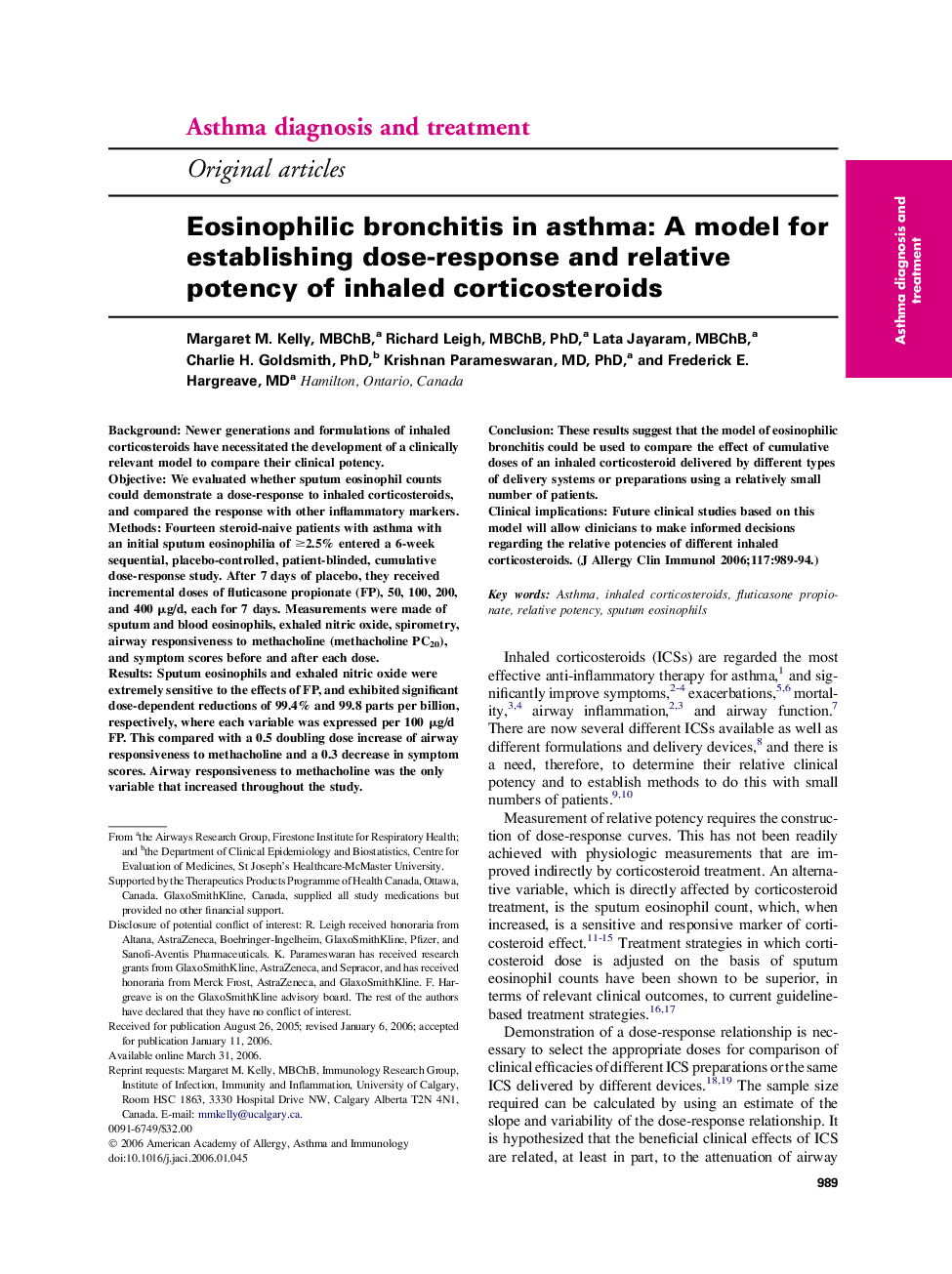| Article ID | Journal | Published Year | Pages | File Type |
|---|---|---|---|---|
| 3203120 | Journal of Allergy and Clinical Immunology | 2006 | 6 Pages |
BackgroundNewer generations and formulations of inhaled corticosteroids have necessitated the development of a clinically relevant model to compare their clinical potency.ObjectiveWe evaluated whether sputum eosinophil counts could demonstrate a dose-response to inhaled corticosteroids, and compared the response with other inflammatory markers.MethodsFourteen steroid-naive patients with asthma with an initial sputum eosinophilia of ≥2.5% entered a 6-week sequential, placebo-controlled, patient-blinded, cumulative dose-response study. After 7 days of placebo, they received incremental doses of fluticasone propionate (FP), 50, 100, 200, and 400 μg/d, each for 7 days. Measurements were made of sputum and blood eosinophils, exhaled nitric oxide, spirometry, airway responsiveness to methacholine (methacholine PC20), and symptom scores before and after each dose.ResultsSputum eosinophils and exhaled nitric oxide were extremely sensitive to the effects of FP, and exhibited significant dose-dependent reductions of 99.4% and 99.8 parts per billion, respectively, where each variable was expressed per 100 μg/d FP. This compared with a 0.5 doubling dose increase of airway responsiveness to methacholine and a 0.3 decrease in symptom scores. Airway responsiveness to methacholine was the only variable that increased throughout the study.ConclusionThese results suggest that the model of eosinophilic bronchitis could be used to compare the effect of cumulative doses of an inhaled corticosteroid delivered by different types of delivery systems or preparations using a relatively small number of patients.Clinical implicationsFuture clinical studies based on this model will allow clinicians to make informed decisions regarding the relative potencies of different inhaled corticosteroids.
